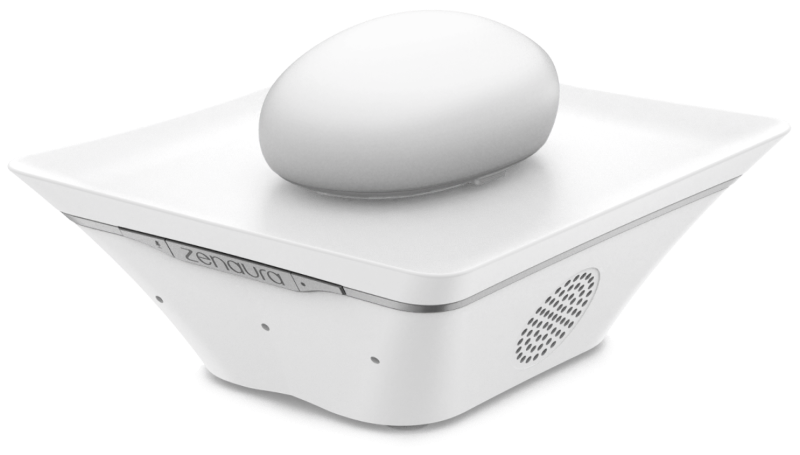“To shine your brightest light is to be who you truly are,” as aptly put by Roy T. Bennett. But to shine your brightest, you must take in some light from mother nature or another source. Light is a ruling factor that dictates our days to nights and even our moods. But how does light affect humans?
Light, the fundamental electromagnetic radiation that permeates our cosmos, is more than simply a tool to examine our surroundings. Light also plays an essential role in other processes in our bodies. Beyond their apparent implications in practical situations, the frequencies of light also significantly impact our well-being and how our bodies function.
People are susceptible to a wide range of impacts influenced by light, including their circadian cycles, mood, the ability to control their mood, and even the activities of their cells. We are going to investigate the fascinating study that has been done on how different light frequencies affect our bodies and minds here in this blog.

Understanding Light Frequencies
To fully appreciate light wavelengths’ effects on humans, one must first understand electromagnetic radiation. Photons, the fundamental particles of light, function as carriers of energy that move through space in waves. The frequency of a wave is measured in terms of how many times it passes a specific place in one second.
In contrast, the wavelength is the distance that separates two consecutive wave crests. The human visual system can detect light with wavelengths ranging from 400 to 700 nanometres; this portion of the electromagnetic spectrum is called the visible spectrum.

The Role of Light in Circadian Rhythms
The circadian rhythm is an inborn biological clock that controls daily human physiology and behaviour variations. It runs on a cycle of 24 hours and operates on its own internal timekeeping system. The exposure of our biological clocks to light is the only way to become calibrated to the day-night cycle of 24 hours. The amount of light that we are subjected to, in addition to the quality of that light, significantly influences how significant influence on the way that our circadian clock functions.
Evidence shows that exposure to blue light, which has a relatively short wavelength, can drastically alter circadian rhythms. Blue light, which predominates during the day, has been shown to improve wakefulness, memory, and disposition.
Blue light, in particular the form emitted by electronic gadgets, has been shown to induce disruptions in regular sleep patterns, as well as sleep deprivation and the health problems that come with it if an individual is exposed to it for extensive amounts of time during the night. This is mainly the case when the individual is exposed to it longer than usual.

The Influence of Light on Mood and Mental Health
Not only does the frequency of light have a role in regulating our sleep, but it also impacts our feelings and mental health. Evidence suggests that exposure to natural sunlight, which is rich in blue light, can improve one’s mood, raise serotonin levels, and lessen the severity of depression symptoms.
The development of Seasonal Affective Disorder (SAD), also known as winter blues, has been linked to insufficient exposure to natural light, particularly during the darker winter months. Inadequate exposure to natural light has also been shown to aggravate symptoms of depression and anxiety in patients who suffer from seasonal affective disorder (SAD).
Zenaura S³ for Improved Mental State
In recent years, light therapy, also known as phototherapy, has been the topic of study into its potential efficacy as a treatment for mood disorders. This research has been conducted in both humans and animals. Using a Zenaura S³ multisensory diffuser, which produces light frequencies that can assist in treating depressed and manic-depressive symptoms to boost your mood.
One of the functions of Zenaura S³, which changes the colours of the light, also has the added benefit of assisting with relaxation. It is common knowledge that different colours elicit various responses and associations in our minds and bodies.
For instance, green light is commonly associated with harmony and equilibrium. In contrast, blue light is recognised for its ability to relax and soothe. You can customise your experience with the Zenaura S³ light by matching the colour to how you want to feel or what you want to do. Alternatively, you may set the light to a pre-programmed zenritual with pre-set hues.

Impact on Physical Health and Well-being
Because of the impacts that light wavelengths have on circadian cycles, they impact more than just our minds and bodies. The sun is one of the most important sources of vitamin D, essential for healthy bones, a functioning immune system, and overall wellness, and vitamin D is one of the most essential nutrients.
An insufficient amount of exposure to natural light, which can lead to a deficiency in vitamin D, has been related to various health issues, including brittle bones, a lack of muscle strength, and an increased risk of acquiring chronic diseases.
In addition, research has been done to determine whether it is possible to use medicinal applications that involve light of specific wavelengths. Photobiomodulation, also known as low-level laser therapy, is a treatment that uses red and near-infrared light to boost cellular activity and hasten the recovery of injured tissues.
This technique has demonstrated great promise in several different pain alleviation, inflammation reduction, and wound healing applications.

Impact on Sleep and Productivity
As previously mentioned, the degree to which we are sensitive to light significantly influences the quality of sleep we get. Melatonin, often known as the sleep hormone, is produced in the body and is controlled by light. Exposure to blue light in the evening suppresses the production of the hormone melatonin, making it more difficult to fall asleep and leading to a lower sleep quality overall.
In settings such as offices and classrooms, the colour temperature of the lighting has a considerable influence on how well people execute their tasks and how well they can focus. Exposure to light with a cooler, bluer hue has been shown to boost focus, making it a good choice for tasks requiring full and undivided attention. On the other hand, warmer and redder light is preferred since it helps people wind down before bedtime and is therefore preferable.
Zenaura S³ Helps with Health and Sleep
Your body will reap additional benefits due to the Zenaura S³’s relaxing effects and lower stress levels. There are a variety of health issues that have been linked to persistent stress, some of the most common of which include a compromised immune system, problems with the heart, and difficulty sleeping. These unwanted effects can be reduced because of Zenaura S³’s capacity to provide a calming atmosphere through its multimodal properties, which benefit both sleep and overall health.

Light Frequencies in Modern Technology
The development of modern technology has increased the prevalence of synthetic light sources operating at various frequencies. Blue light is emitted in significant amounts by electronic devices such as smartphones, computers, tablets, and LED lighting. There is no doubt that contemporary technology has positively impacted our day-to-day lives. Still, there are risks connected with spending too much time in front of a screen, particularly in the hours leading up to bedtime.
The negative effects of artificial light can be reduced by employing several different tactics, including the ones listed below:
- Keeping your time in front of the screen to a minimum, especially right before bed
- Blue light filters being used on electronic devices
- Choosing a lighting scheme with warmer tones for the evening
- Attempting to get as much natural sunlight as possible during the day.




















